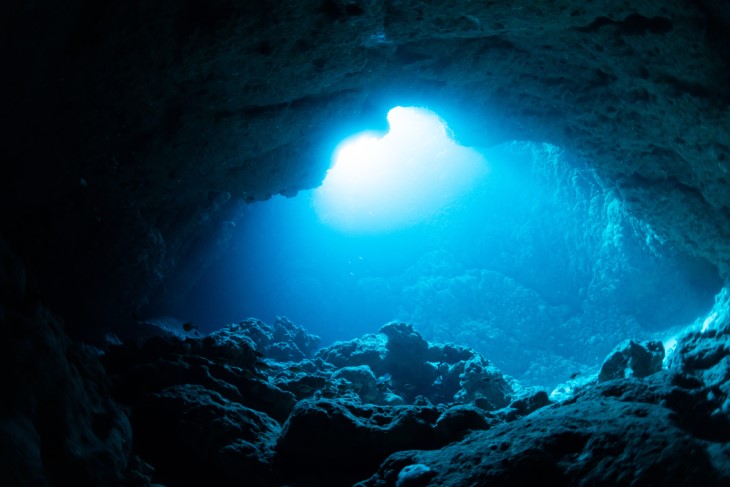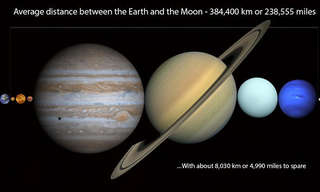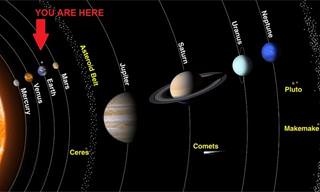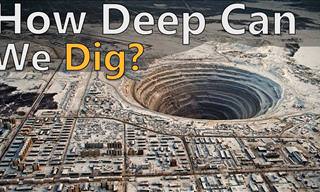
A groundbreaking discovery by Northwestern University researchers reveals an enormous water reservoir deep beneath the Earth's surface, fundamentally altering our understanding of the planet's water origin. This vast underground ocean, found approximately 700 kilometers below us, challenges previously held notions about the Earth's water, suggesting it may have emanated from the planet's interior rather than being introduced from extraterrestrial sources.
The study, published in 2014 and titled "Dehydration melting at the top of the lower mantle," offers compelling evidence of the reservoir's existence within a type of blue rock known as ringwoodite. This mineral, situated in the Earth's mantle—the hot, dense layer of rock between the crust and the core—has the remarkable ability to store water within its structure. The mantle acts as a colossal sponge, holding water in the form of hydrogen and hydroxide ions.

Steven Jacobsen of Northwestern University, who played a pivotal role in the research, conveyed to New Scientist the significance of the discovery, emphasizing its implications for our understanding of Earth's water cycle. The existence of such a reservoir supports the theory that Earth's surface water originated from within, seeping out over time to form oceans.
The researchers utilized a network of 2000 seismometers to analyze the seismic waves generated by over 500 earthquakes. These waves, which travel through the Earth's interior and can be detected at the surface, provided invaluable insights into the subterranean world. By observing variations in wave speed at different depths, the team could identify the presence of dampened rock, indicating water.
This method of investigation highlights the dynamic and interconnected nature of Earth's layers, offering a glimpse into deep geological processes. Jacobsen likened the planet's reaction to seismic waves to a bell that continues to resonate long after the initial event, a phenomenon that allowed for the detailed analysis of the underground landscape.
The discovery not only enriches our understanding of Earth's geology but also carries profound implications for the global water cycle. According to Jacobsen, without this deep reservoir, Earth's surface would be vastly different, with significantly higher sea levels covering much of the land. This hidden ocean, therefore, plays a crucial role in maintaining the balance of water on and within our planet. It could very well be that the oceans we know are actually LEAKAGE of this proto-ocean, a huge body of water coming from inside the earth.

Above is the traditional section of what we THOUGHT Earth's mantle and core looked like. Now imagine that between the different parts is a huge body of water, slowly leaking out to the oceans we know.
Supporting evidence from a separate 2014 study by the University of Alberta researchers further solidifies the findings. They analyzed a diamond expelled from deep within the Earth by a volcano, which contained traces of water-bearing ringwoodite. This additional proof underscores the prevalence of water in the Earth's mantle, specifically within the transition zone—a region characterized by dramatic shifts in temperature, pressure, and mineral composition, located between the upper and lower mantle.
Together, these studies revolutionize our comprehension of Earth's water sources, suggesting a much more complex and internally driven water cycle than previously thought. The existence of such an immense subterranean ocean opens new avenues for research, potentially reshaping our approach to studying Earth's geological and hydrological phenomena.

Join Us for a Tour of 8 Giant, Luxurious Cruises
8 vessels that will undoubtedly inspire you to plan a future sailing vacation aboard them - complete with accompanying videos showcasing their delightful features.
 5:48
5:48
3 Surefire Ways to Always Identify Pseudoscience
Find out how you can identify pseudoscience, and learn how it differs from actual science.

Incredible Science Breakthroughs That Made News in 2022
Let’s check out some of the most interesting scientific discoveries of 2022.
 5:21
5:21
Started as an Experiment, Ended up Being a Pet!
That's not a monster in the depths, that's only an octopus! And once you get to know her, you'll see that she's a load of fun. Meet Heidi.
 9:50
9:50
Visit the World's First Commercial Coral Farm
This process is called assisted evolution, and it sheds the future in bright light.

Are You Brave Enough to Visit the World's Largest Cave?
For the humble price of $ 3,000 and a year's waiting list, you too could visit this place. Is it worth it?

Wow! Who Knew That Jupiter Was So Mesmerizing?
Take a look at Jupiter like you've never seen it before!

6 Weird and Creepy Medical Tools of the Past
After seeing these weird and creepy medical devices of the past, you’ll be thankful you live in the 21st century. Take a look for yourself.

Why Do We LAUGH? 7 Studies on the Origins of Humor
As pervasive as it is in our lives, the origin of laughter remains an intriguing enigma. This article investigates the origins of laughter and humor.
 8:14
8:14
What Would You Do if You Had an Extra Thumb?
This revolutionary invention has the potential to revolutionize the field of prosthetics.
 1:22
1:22
Are Smartphones Making Us Stupid? This Will Surprise You!
If you use a smartphone you need to see this!

TRIVIA: 25 Shocking Differences Between the Sexes
Did you know that there are some vast differences between the sexes? These 25 scientific facts will probably come as a big surprise to you, they did to me.
 14:49
14:49
This Man Built an Automatic Train System for Trash Cans!
Wouldn’t it be cool if a robot picked up and moved our garbage out for pickup with the push of a button?
 26:45
26:45
Future Technology: Inventions That Will Change Our World
Check out a few amazing futuristic inventions that are about to become mainstream.

Amazing Science: THIS is the True Scale of Our Universe...
Get a sense of the true scale and shape of the universe we've discovered so far.

11 Technologies to Potentially Achieving Immortality
Scientists are hard at work developing technologies that could extend our lifespans and even make us immortal. Here are 11 of them.

You Won't Believe That These Things Exist in Japan...
If there's one place on this planet that well and truly at the forefront of modern technology, it has got to be Japan, as these inventions prove...

Researchers Claim This Ingredient Can Cure Depression!
A preliminary study has suggested that magic mushrooms may be able to soothe the symptoms of depression. Read here to find out more.

Travel From the Sun to Pluto With Our Interactive Guide!
The solar system is a fascinating place, and we wanted to bring you an interactive journey that you can use to travel through it. Enjoy the journey!
 5:13
5:13
Whatever Happened to that Hole in the Ozone Layer?
Let's embark on this enlightening journey to better understand our atmosphere's health.
 33:50
33:50
The Future is in Our Hands - Next Generation Technology
These young brilliant minds grind hard at finding and creating solution to waste recycling, and the results are promising.

8 Biggest Mysteries Still Surrounding the Human Body
Although modern science has revealed much about the human body, there are some things that still remain unknown. Here are the 8 biggest mysteries about it.

Welcome to the Fastest Maze-Solving Competition Ever Made...
Welcome to Micromouse, a competition for the quick of eyes and the quick of minds. This is the oldest robotics race.

These Are the Miracles That Happen in Our Bodies Every Day
There is a lot that happens inside our bodies every single day. Did you know any of these facts?
 13:01
13:01
13 Incredible ROOF INNOVATIONS For Your House
Keep the roof of your house safe with these incredibly useful inventions.
 23:26
23:26
Incredible: This Man Got the First Double-Arm Transplant
Felix Gretarsson got burned in both arms and needed the new ones. For that purpose, he went through history's FIRST 2-arm transplant.

These Photos Show How Dependent We are On Smartphones
Technology has taken over and these funny (but true) photos help to drive this fact home.

Can One Photo Really Tell How Good Your Eyesight Is?
Scientists say that this single photograph can tell you whether you have good vision or not. Who can you see in the image?

6 Intriguing Archeological Finds of the 21st Century
These archaeological and paleontological discoveries were made in the past 10 years and they're equally fascinating and intriguing...

These Inventions Prove the Middle Ages Were Not So “Dark”
These groundbreaking inventions prove the Middle Ages were not so “dark,” after all!
 9:24
9:24
These Shoes Can Boost Your Walking Speed by 250%!
Robotic engineers have created shoes that, they claim, will increase your speed by 250%.

How Your Eye Came to Be the Color It Is...
Why do we have different-colored eyes, and what does it mean?
 8:11
8:11
Fascinating: What is the Deepest Hole Humanity Has Dug?
This video explains how low humanity has dug down so far.
 3:26
3:26
The McGurk Effect - Don't Believe Your Eyes!
What we hear can be affected by what we see...

17 Experiments That Produced Very Bizarre Results...
Take a look at this collection of photos showing how common people performed some fascinating accidental scientific experiments.
 8:24
8:24
Why is Everyone Obsessed with This Weight-Loss Tool?
Ozempic has been touted as a wonder drug for weight loss in recent months. But what's the real truth behind it?
 16:55
16:55
Sleep Inventions: 16 Gadgets to Help You Doze Off
If you frequently struggle with sleep, then trying these amazing new sleep innovations could help change your life.

Guide: All About the Gut-Brain Connection in Your Body
it's becoming increasingly clear just how influential our tiny gut microbes are in shaping our mood and even our overall health.

6 Shocking Truths About Coffee You Never Knew
Have you been believing these common coffee myths too?
 4:27
4:27
Get a Sense of Scale of Just How Big SpaceX's Rockets Are
SpaceX is achieving incredible things in space, however it's difficult to picture just how big their rockets are. Take a look...

Doctors Make History With First Whole Eye Transplant
Surgeons in New York have performed the world’s first transplant of an entire human eye!

I Bet You Didn't Have a Clue About These Human Body Facts!
The human body is the most complex machine known to mankind, but I bet you don't know these 10 amazing facts about it...

What Metals Do We Mine the Most? This Graph Shows All!
Did you know the world mined 2.8 billion tonnes of metals in 2021? Let’s discover what metals we mined the most.
 6:11
6:11
Your Voice is as Unique As Your Fingerprints
This fascinating video explains how this unique characteristic of humans works, and what makes our voices unique.

5 Puzzling Mysteries That Science Finally Managed to Solve
These weird occurrences have puzzled humanity for decades, if not centuries. Finally, scientists solved them & the solutions are exciting...
 13:38
13:38
24 Smart Storage Inventions You Didn't Know You Needed
These super useful inventions are designed to make you help space!
 13:55
13:55
The Disappearing Computer: Revolution on a Personal Scale
What happens when we lose the physical large computer all together? This lecture explains what ahead for computers.


